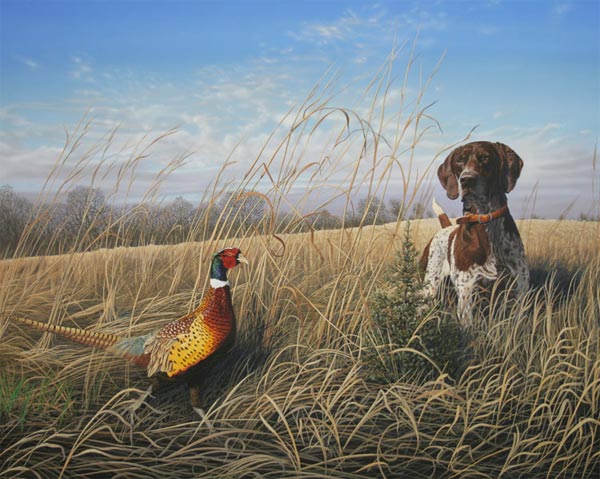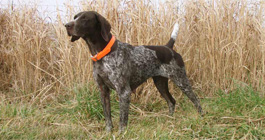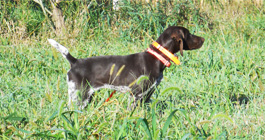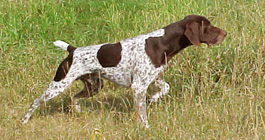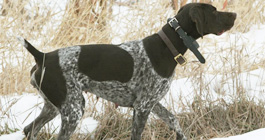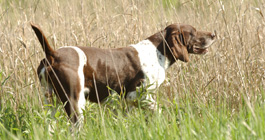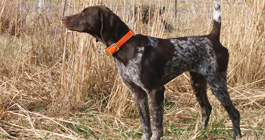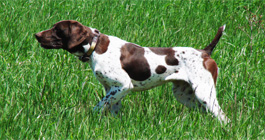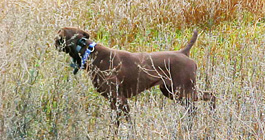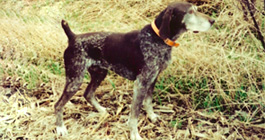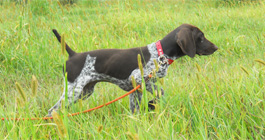The Hunting Dog as an Extension Of You
There are many sporting breeds for upland bird hunting and everyone has a personal preference. In my experience, many types and breeds of dogs can be effective hunters. Most sporting breeds produce well-rounded companions with the genetics to excel while hunting in the field or on the lake. A good bird dog, regardless of breed, will give you a longer reach and the ability to find, point or flush and retrieve more birds than you could on your own. The shooting part, though, is up to you.
Upland Types
There are three general categories sporting dogs used for upland bird hunting: Flushing, Pointing and Retrieving. Each type has its own strengths and characteristics, in addition to variations among the breeds within each type. The following is a very general overview of what you can expect from a hunting companion of each type. Keep in mind that these are general statements and you may see significant differences not just among different breeds, but also between dogs of the same breed.
Pointing Breeds
As a breeder and trainer of pointing dogs for many years, I’m a little biased. Pointing dogs fit my hunting style best, but I have enjoyed hunting with Flushers and Retrievers as well.
Hunting Strengths – Pointing breeds are often somewhat smaller and leaner than retrievers, and capable of covering a lot of ground due to tremendous athleticism. Some breeds have less speed but still exhibit great endurance. They will generally hunt within gun range, and upon finding a bird, they will lock on point and give you time to approach for a comfortable shot. Most pointing breeds will naturally retrieve to hand.
Common Breeds – Brittany, English Setter, German Shorthaired Pointer, German Wirehaired Pointer and Pointer (English).
Retrieving Breeds
Retrievers include the most popular registered breed (Labrador Retriever) according to the American Kennel Club (AKC). This is generally considered to be a result of the intelligence and social nature of the breed.
Hunting Strengths – Retrieving breeds are known for their versatility and their ability to withstand extreme cold, be it snow, ice or water. They generally have a more rugged build but maintain good speed and agility. They will quarter in front of the hunter to flush upland birds, and should stay within comfortable gun range. As you can tell from the name, they are enthusiastic retrievers of upland birds and they love the water.
Common Breeds – Chesapeake Bay Retriever, Golden Retriever and Labrador Retriever.
Flushing Breeds
Flushers also include some breeds that are very popular as house companions due to their size, appearance and disposition. For the most part, Spaniels populate the flushing category.
Hunting Strengths – Flushing breeds are generally smaller in stature than many pointing and retrieving counterparts. They will quarter in front of the hunter to flush birds and should also stay within comfortable gun range. Like Retrievers, they are very comfortable in water and have coats that are well suited to extreme cold. Flushers will naturally retrieve to hand and are well known for their stamina.
Common Breeds – Boykin Spaniel, English Cocker Spaniel and English Springer Spaniel.
Many Good Breed Choices
The thing to remember is that the best bird dog is the one that fits your hunting style. Research the various breeds and find one with the traits and qualities you desire. Training and hunting with an instinctive hunting companion can provide many years of outdoor enjoyment. If you don’t have the time or experience to train him, we encourage you to work with a professional to bring out the natural gifts of whatever breed you choose.
